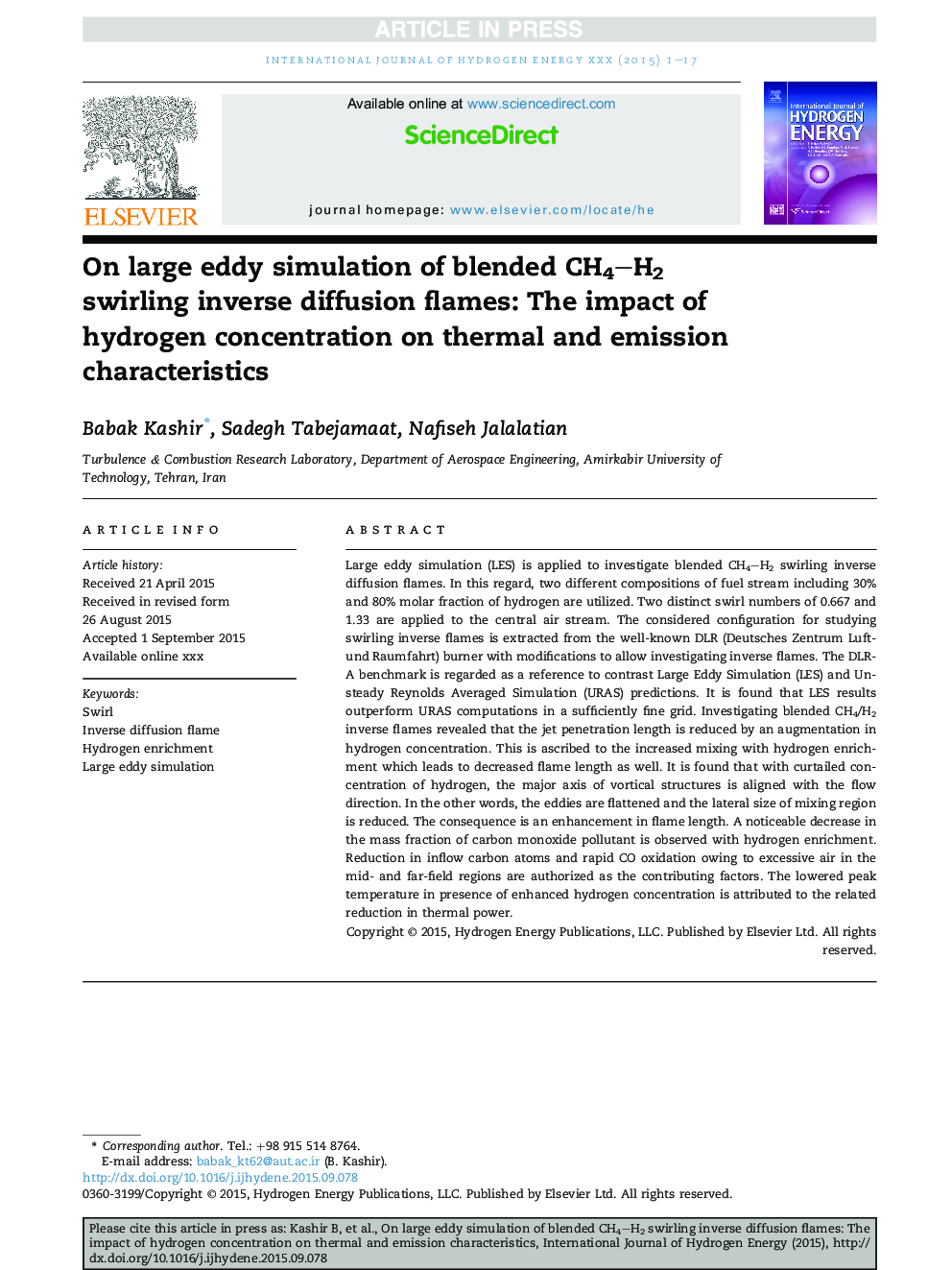| Article ID | Journal | Published Year | Pages | File Type |
|---|---|---|---|---|
| 7713644 | International Journal of Hydrogen Energy | 2015 | 17 Pages |
Abstract
Large eddy simulation (LES) is applied to investigate blended CH4-H2 swirling inverse diffusion flames. In this regard, two different compositions of fuel stream including 30% and 80% molar fraction of hydrogen are utilized. Two distinct swirl numbers of 0.667 and 1.33 are applied to the central air stream. The considered configuration for studying swirling inverse flames is extracted from the well-known DLR (Deutsches Zentrum Luft- und Raumfahrt) burner with modifications to allow investigating inverse flames. The DLR-A benchmark is regarded as a reference to contrast Large Eddy Simulation (LES) and Unsteady Reynolds Averaged Simulation (URAS) predictions. It is found that LES results outperform URAS computations in a sufficiently fine grid. Investigating blended CH4/H2 inverse flames revealed that the jet penetration length is reduced by an augmentation in hydrogen concentration. This is ascribed to the increased mixing with hydrogen enrichment which leads to decreased flame length as well. It is found that with curtailed concentration of hydrogen, the major axis of vortical structures is aligned with the flow direction. In the other words, the eddies are flattened and the lateral size of mixing region is reduced. The consequence is an enhancement in flame length. A noticeable decrease in the mass fraction of carbon monoxide pollutant is observed with hydrogen enrichment. Reduction in inflow carbon atoms and rapid CO oxidation owing to excessive air in the mid- and far-field regions are authorized as the contributing factors. The lowered peak temperature in presence of enhanced hydrogen concentration is attributed to the related reduction in thermal power.
Related Topics
Physical Sciences and Engineering
Chemistry
Electrochemistry
Authors
Babak Kashir, Sadegh Tabejamaat, Nafiseh Jalalatian,
